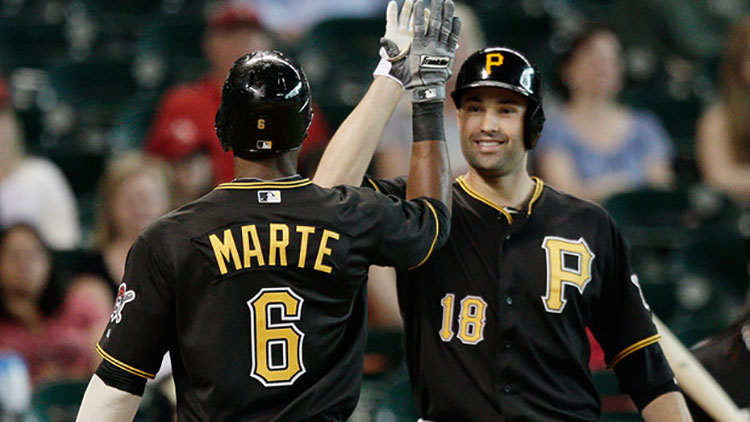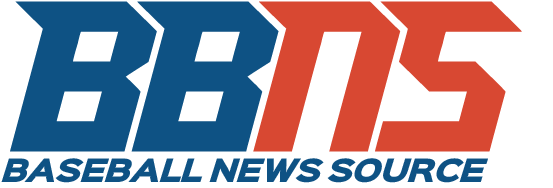 Unless you consider a fifth-starter reclamation job and a handful of wait-and-see organizational promotions exhilarating, it’s been an awfully quiet offseason for the Pittsburgh Pirates.
Unless you consider a fifth-starter reclamation job and a handful of wait-and-see organizational promotions exhilarating, it’s been an awfully quiet offseason for the Pittsburgh Pirates.
Not so for the Atlanta Braves, who earlier this winter signed the future core of their franchise to five contract extensions totaling 27 years and over $280 million in just over two weeks’ time.
Pittsburgh is never going to be a big-market club, and no amount of fireworks nights or even legitimate home sellout streaks will take them into the same economic strata of the league’s big spenders. However, the Braves have shown that remaining competitive doesn’t necessarily mean spending oneself into bankruptcy.
Like Pittsburgh, Atlanta projects to enter the 2014 season among the lower half of MLB payrolls, likely at 16th overall in the neighborhood of some $90 million. That’s not an untenable number for the Pirates. Payroll aside, the key lesson Pittsburgh must take from the Braves is that it’s much cheaper to sign one’s own promising young talent than to try to scrape the free agent market for big-money names or hit-or-miss reclamation projects.
The Pirates (rightfully) won’t overpay for established MLB talent, especially when those kinds of contracts usually carry a few seasons of declining production in exchange for prime years earlier on.
Given that option, the Braves model is one the Pirates could match, both on the field and on the books.
While Pittsburgh is still a few years away from graduating all of its would-be “core” players to the Majors, that doesn’t mean they can’t get things underway.
Of the players under consideration, Marte can rightly be considered part of the team’s core moving forward. He and Andrew McCutchen are everyday starters in a Gold Glove-caliber outfield that is awaiting the arrival of super-prospect Gregory Polanco. Other players who might be part of a future Pirates core are either too early in their development (Polanco, Jameson Taillon) or too difficult to get under contract (Scott Boras clients Gerrit Cole and Pedro Alvarez) to be signed right away.
Andrew McCutchen is the franchise player, and he’s under contract through 2018. Other than McCutchen, only Charlie Morton and Jose Tabata are signed through as long as 2017 (with option years at the end of their contracts), and neither is going to be an indispensable piece of the roster puzzle.
Marte may have an upside approaching what McCutchen provides — especially defensively, an area in which many consider Marte to already be superior to the team’s MVP center fielder.
Marte has the defensive upside to command a contract based on his high defensive potential, even if it means taking a risk on his high strikeout rate (138 K’s in 510 AB’s last season). He was a Gold Glove finalist in 2013, and his 4.6 WAR in 2013 ranked him 15th among all NL players. With the Pirates planning to implement a new series of outfield defensive shifts to coincide with their highly-successful infield shifts of a year ago, having a player of Marte’s range and arm strength is no small part of making such a plan work.
If the Pirates are looking for a benchmark contract for Marte, though, it isn’t McCutchen — there is a contract comparable already in place in Atlanta shortstop Andrelton Simmons.
Touching back on the Braves’ busy offseason brings us to Simmons, who signed a 7-year, $58 million contract this winter after just 1.5 seasons of MLB experience (a record ~$8 million AAV for a player of such little MLB experience). The contract extension came on the heels of Simmons’ record-setting defensive season, in which he accounted for 41 defensive runs saved, according to FanGraphs.
Like Marte, his bat is suspect. In 2013, Simmons posted a .248/.296/.396 line, compared to Marte’s slightly superior .275/.332/.440. Still, his defensive prowess was so great that the Braves sought to buy out all three of his arbitration years and beyond despite his still-limited resume.
And, as part of the Braves’ contract offensive, Simmons knows he is part of a larger plan to win.
“It’s really nice to see that the Braves want to keep this team together,” Simmons said. “We have a very talented team. It’s a fun team to be around.
“Them showing the confidence in us is really cool.”
That security blanket may be the most important thing the Pirates can buy in a contract extension for Marte. Pittsburgh has improved steadily in the Neal Huntington era, and their incoming talent would likely see them build on last year’s success.
However, one postseason appearance only began to heal the wounds of the last two decades. Huntington and his team have shown they can build a winner on a shoestring budget. What they have yet to prove — to their players as much as their fans — is that they will retain the talent needed to field a winning roster, year-in and year-out.
McCutchen’s deal was a nice start, but in the realm of winning teams, one contract can only ever be a start.
A new deal for Marte might go a long way toward convincing his teammates that the Pirates are chasing pennants, not profits. He’s under team control for five more seasons, but buying out arbitration through a mutually-agreed upon deal is a good faith measure. It provides a known quantity for the team and greater security for the player.
In Marte’s case, it could also do a great deal to help the team put a strong finishing touch on the work done by its Latin American scouting department.
Pittsburgh greatly increased its scouting presence in Latin America under Huntington, a group headed by Rene Gayo. They’ve since signed and developed names like Gregory Polanco and Alen Hanson, who project to be everyday MLB players. Marte is the first of Gayo’s products to reach the Majors. Signing him to a contract extension this early into his career would be proof that the Pirates indeed take care of their players (and, most importantly, will open the checkbook for them).
Much of the success of international scouting is based on trust. Even though they’ve got five years of control left, Pittsburgh can build a great deal of trust with a strong contract offer to Marte made now.
While these are all peripheral benefits are wonderful, the lesson to be taken from the Simmons deal is that it may ultimately be more affordable to overpay a young player with high upside early in his contract in order to see it become a bargain down the road.
Especially when a few years of All-Star performance is likely to price your own players right out of town.
“We believe [Simmons] is the premier shortstop in the game, and we’re thrilled to have him signed through all of his arbitration years and his first two free-agent years,” Braves GM Frank Wren said after reaching terms with Simmons. “It continues with the theme of keeping our core together for a long time, and we think he’s an integral part of that.”
Pittsburgh has the opportunity to build a core like the Braves, and Marte should be an integral part of it. But if the Pirates are to build a core, they’ll have to do it in increments.
Above all, this team is bullish on its outfield. If that’s the future of the franchise, locking Marte into the long-term picture is a great place to start.
I’m on twitter.
